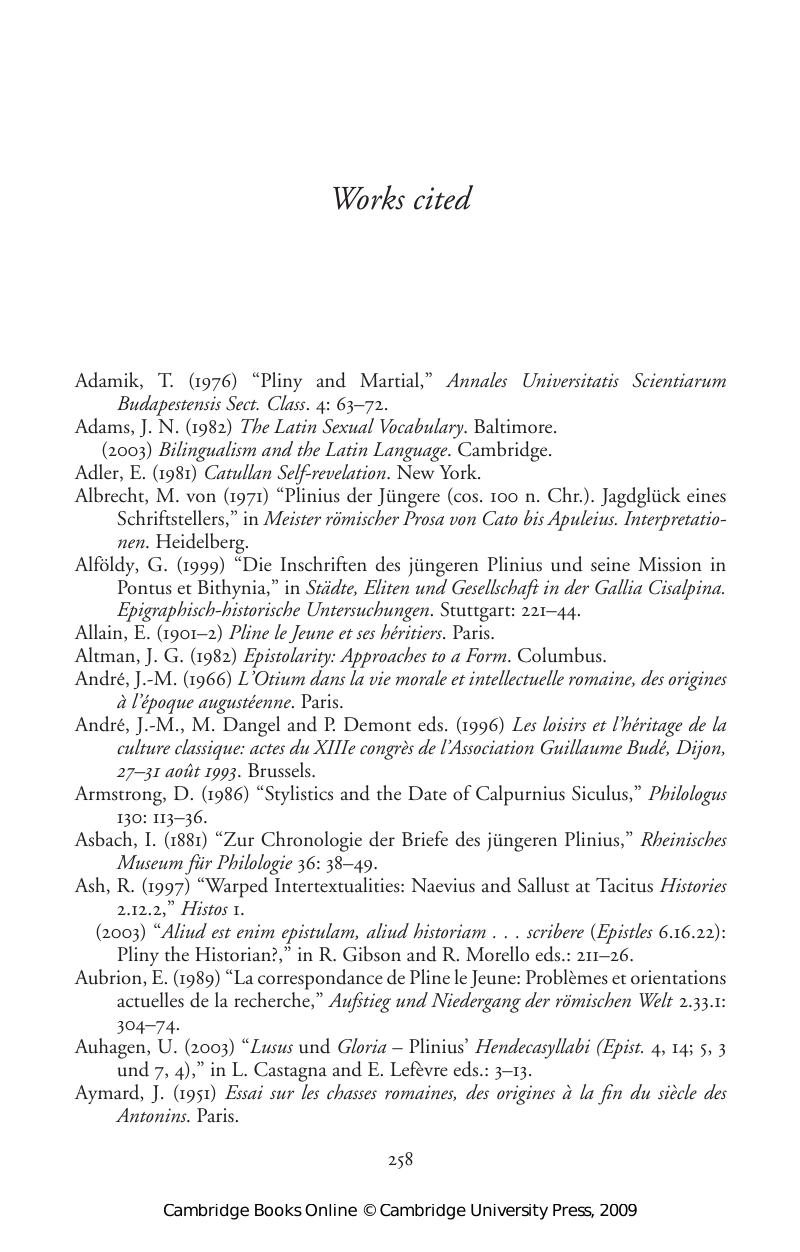Book contents
- Frontmatter
- Contents
- Acknowledgements
- Preface
- Introduction
- Chapter 1 The semiotics of structure
- Chapter 2 Sed quid ego tam gloriose? Pliny's poetics of choice
- Chapter 3 The importance of being Secundus: Tacitus' voice in Pliny's letters
- Chapter 4 Storming historiography: Pliny's voice in Tacitus' text
- Chapter 5 Overcoming Ciceronian anxiety: Pliny's niche/nike in literary history
- From dawn till dusk: four notes in lieu of a conclusion
- Appendix to chapter 5
- List of works cited
- General index
- Index locorum
- References
List of works cited
Published online by Cambridge University Press: 22 September 2009
- Frontmatter
- Contents
- Acknowledgements
- Preface
- Introduction
- Chapter 1 The semiotics of structure
- Chapter 2 Sed quid ego tam gloriose? Pliny's poetics of choice
- Chapter 3 The importance of being Secundus: Tacitus' voice in Pliny's letters
- Chapter 4 Storming historiography: Pliny's voice in Tacitus' text
- Chapter 5 Overcoming Ciceronian anxiety: Pliny's niche/nike in literary history
- From dawn till dusk: four notes in lieu of a conclusion
- Appendix to chapter 5
- List of works cited
- General index
- Index locorum
- References
Summary

- Type
- Chapter
- Information
- The Art of Pliny's LettersA Poetics of Allusion in the Private Correspondence, pp. 258 - 271Publisher: Cambridge University PressPrint publication year: 2008



